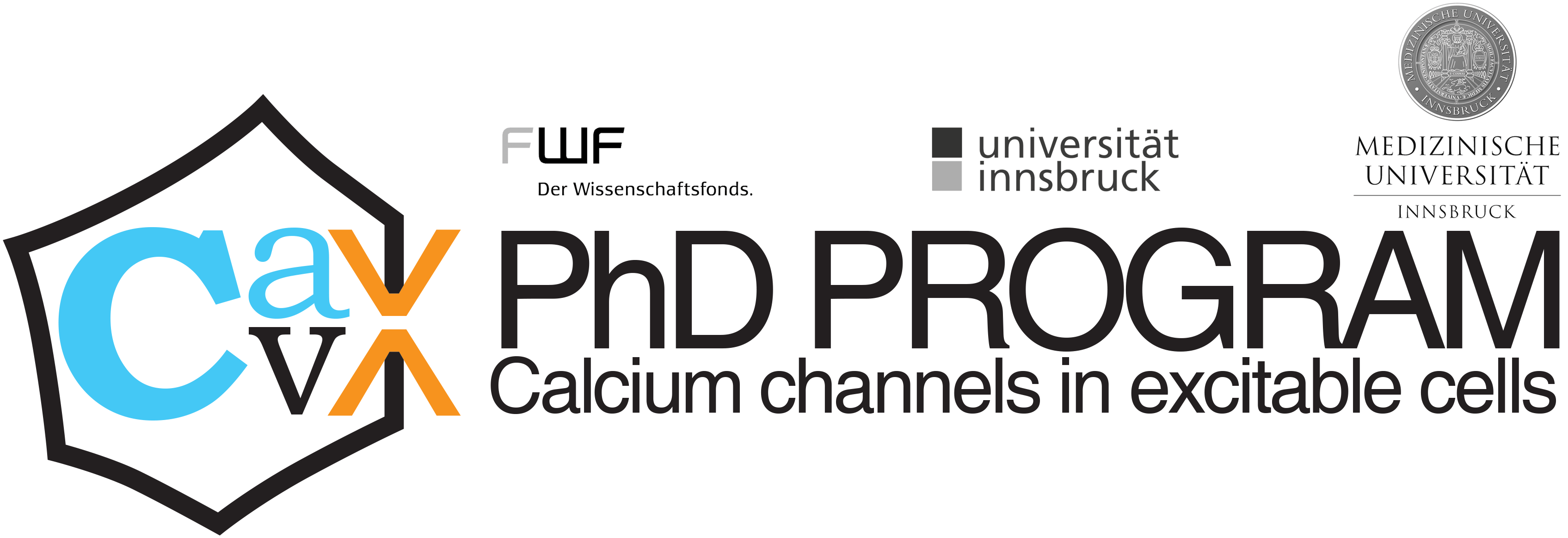// GEISLER GROUP
Keywords: Voltage-gated calcium channels // Stac proteins // L-type calcium cannels // electrophysiology // Ca2+ imaging // mouse behavior // neurological disease
// PROJECT
// AIM
Voltage-gated calcium channels (CaVs) serve as the primary conduit for regulated Ca2+ influx into brain neurons, crucial for vital functions such as synaptic plasticity, cell excitability, neurotransmitter release, and gene expression. Their broad neuronal expression and multifaceted roles underscore their significance, as malfunction can trigger severe neurological disorders such as schizophrenia, epilepsy, and autism spectrum disorders. My research aims to delineate the contributions of distinct CaV α1 isoforms and their accessory subunits (Stac, α2δ) in both healthy and potentially diseased brain neurons and neuronal circuits.
// APPROACH
We have implemented a multidisciplinary approach to examine the neuro(patho)physiological role of Cav subunits, ranging from the subcellular to the behavioral level. Applied methods include:
- Primary cultures obtained from either wild-type or genetically modified mice,
- Electrophysiology: current-clamp to study spontaneous action potential firing and cell excitability, voltage-clamp to asses contribution of ion channels to abnormal activity,
- Calcium imaging to quantify the dynamic changes in intracellular calcium levels and to investigate neuronal network activity,
- Immunofluorescent & histological stainings to examine brain and synapse morphology,
- Molecular Biology (e.g. Western Blot, affinity purifications) to study native Cav proteomes and interaction partners,
- Mouse behavior to assess role of calcium channels in body functions and neurological disease
// RESEARCH TOPICS
- Role of Stac proteins in brain neurons
Somatodendritic CaV1.2 and CaV1.3 L-type Ca2+ channels (LTCC) convey Ca2+ influx that drives fundamental neuronal functions, including synaptic plasticity and cell excitability. Ca2+ entry through LTCC is tightly regulated by a negative feedback mechanism called Ca2+-dependent inactivation (CDI). Recent studies in cultured cells revealed that overexpression of the SH3 and cysteine rich domain protein 2 (Stac2) inhibits CDI of LTCC thereby prolonging Ca2+ influx. In this project we aim to address the physiological role of Stac2 in healthy and potentially diseased brain neurons. Since STAC2 missense mutations have been identified in patients with schizophrenia our findings will begin to provide novel insights into how Stac2 may contribute to pathology of neuropsychiatric-related behaviors.
- Effect of Cav1.3 variants on human neuron function
Cav1.3 LTCCs facilitate Ca2+– influx at postsynaptic membranes of many brain neurons. Due to their unique biophysical properties, Cav1.3 channels can activate at voltages close to a neuron’s resting membrane potential, which enables them to contribute to neuronal excitability and pacemaking. In the last years, several pathogenic variants in the Cav1.3 encoding CACNA1D gene have been identified in humans, and this number is constantly increasing. However, despite the increasing clinical significance of CACNA1D variants, the cellular and circuit-level consequences in the human brain remain uninvestigated, complicating the search for potential treatment strategies. In this project, together with the Ortner, Tuluc and Edenhofer groups (https://www.edenhofer-lab.com/) we aim to investigate the cellular and network consequences of different CACNA1D variants in human neurons derived from induced pluripotent stem cells.
// LAB MEMBERS
Group leader: Stefanie M. Geisler
// ADDRESS
Pharmacology and Toxicology,
Institute of Pharmacy
University of Innsbruck
Center for Chemistry and Biomedicine
Innrain 80-82/III
A-6020 Innsbruck, Austria
// SELECTED PUBLICATIONS
Jacobo-Piqueras N, Theiner T, Geisler SM, Tuluc P. Molecular mechanism responsible for sex differences in electrical activity of mouse pancreatic β cells. JCI Insight. 2024 Feb 15;9(6):e171609. doi:10.1172/jci.insight.171609. PMID: 38358819, https://www.ncbi.nlm.nih.gov/pmc/articles/PMC11063940/.
Ablinger C, Eibl C, Geisler SM, Campiglio M, Stephens GJ, Missler M, Obermair GJ. α2δ-4 and Cachd1 Proteins Are Regulators of Presynaptic Functions. Int J Mol Sci. 2022 Aug 31;23(17):9885. doi: 10.3390/ijms23179885. PMID: 36077281, https://pubmed.ncbi.nlm.nih.gov/36077281/.
Tuluc P, Theiner T, Jacobo-Piqueras N, Geisler SM. Role of High Voltage-Gated Ca2+ Channel Subunits in Pancreatic β-Cell Insulin Release. From Structure to Function. Cells. 2021 Aug 6;10(8):2004. doi: 10.3390/cells10082004. PMID: 34440773, https://pubmed.ncbi.nlm.nih.gov/34440773/.
Schöpf CL, Ablinger C, Geisler SM, Stanika RI, Campiglio M, Kaufmann WA, Nimmervoll B, Schlick B, Brockhaus J, Missler M, Shigemoto R, Obermair GJ. Presynaptic α2δ subunits are key organizers of glutamatergic synapses. Proc Natl Acad Sci U S A. 2021 Apr 6;118(14):e1920827118. doi: 10.1073/pnas.1920827118. PMID: 33782113, https://pubmed.ncbi.nlm.nih.gov/33782113/.
El Ghaleb Y, Schneeberger PE, Fernández-Quintero ML, Geisler SM, Pelizzari S, Polstra AM, van Hagen JM, Denecke J, Campiglio M, Liedl KR, Stevens CA, Person RE, Rentas S, Marsh ED, Conlin LK, Tuluc P, Kutsche K, Flucher BE. CACNA1I gain-of-function mutations differentially affect channel gating and cause neurodevelopmental disorders. Brain. 2021 Aug 17;144(7):2092-2106. doi: 10.1093/brain/awab101. PMID: 33704440, https://pubmed.ncbi.nlm.nih.gov/33704440/.
Geisler S, Schöpf CL, Stanika R, Kalb M, Campiglio M, Repetto D, Traxler L, Missler M, Obermair GJ. Presynaptic α2δ-2 Calcium Channel Subunits Regulate Postsynaptic GABAA Receptor Abundance and Axonal Wiring. J Neurosci. 2019 Apr 3;39(14):2581-2605. doi: 10.1523/JNEUROSCI.2234-18.2019. Epub 2019 Jan 25. PMID: 30683685, https://pubmed.ncbi.nlm.nih.gov/30683685/. [Journal Cover Image, Featured article]
Full publication list: https://orcid.org/0000-0002-8898-0108

